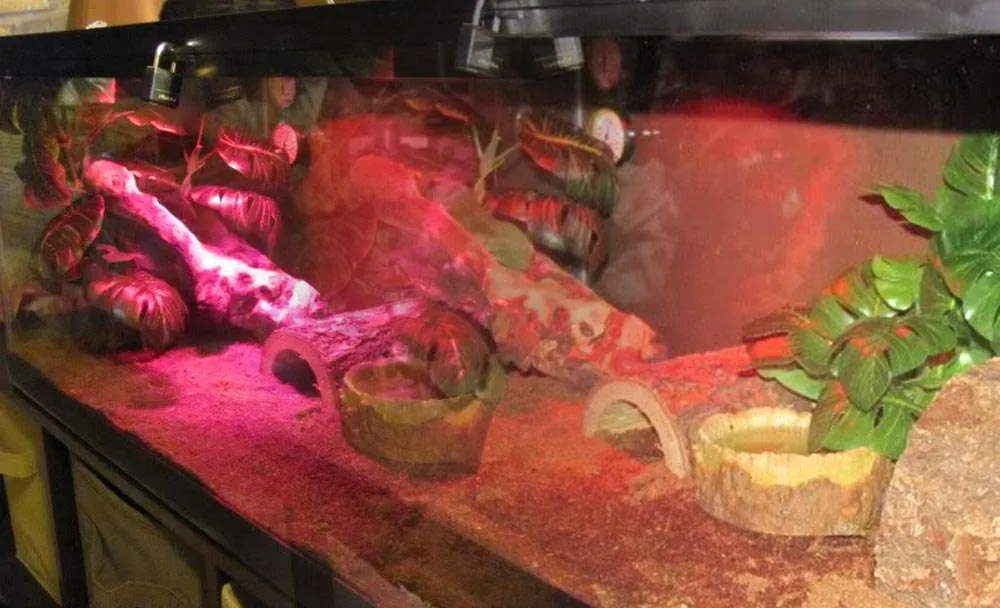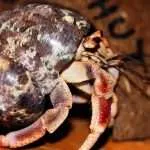If you own a ball python, you may think about which wattage bulb is best for its tank. This blog post will go through ball python lighting and heating needs and advise you on the best products to get for your ball python tank.
Ball pythons are cold-blooded animals that need the external temperature to regulate their bodies and help with digestion.
What Wattage bulb is suitable for a Ball Python Tank?
The type and the wattage of the bulb to brighten your ball python tank depends on the size of your tank.
If you have a large tank, a 150-watt bulb should be enough. But if you have a smaller tank, a 150-watt bulb may be too hot for the tank and cause health issues to your ball python.
Your ball python needs a hot spot on one side of its tank and a cold area on the other.
I recommend you put your bulb as far away from the reach of your ball python as possible to avoid overheating or accidental touching.
Do Ball Pythons Need lighting?
Ball pythons can survive without light in their tanks, but lighting up the tanks is useful. Your ball python can survive without having a bulb in its cage.
The light penetrating their cage walls allows them to see and move around the tank.
The ball python is a nocturnal animal that depends more on its senses of smell and sound.
However, lighting your ball python cage has its advantages.
The light can help simulate the sun and create an artificial night and day cycle. If you’re the active type that won’t have the time to switch the light on and off every day, you can fix a timer to help you do that at a predetermined time.
Simulating Natural light and Temperature in Ball Pythons Tank.
The timer can turn the bulb on at 7 am and turn it off by 7 pm. You will need two bulbs here – one for the day and one for the night.
It can also help maintain the right temperature in the tank. The temperature in the basking area should be between 95° to 105° degrees Fahrenheit, while the general temperature of the tank should fall between 82°- and 86°-degrees Fahrenheit.
The temperature at night should be between 80-83 Fahrenheit. Note that you need to ensure the temperature does not drop at night.
A bulb or heat lamp can also help you consistently maintain the same temperature throughout the year. You can also use bulbs to give your ball python a sense of season.
You can leave the light for longer hours, say 11-12 hours during the summer, and then reduce it to 10 hours during the fall.
Time management will help your ball python know the time of the year and induce breeding.
Bulb and lighting setup in Ball Pythons Tank.
It is not a must to have a bulb or lamp in the ball python’s enclosures, especially if your room is well lit.
But if that’s not the case, you may have to light up its tank.
If the bulb is a fixture you want, you can place it close to the tank.
I recommend a fluorescent bulb with a dimming tool in the bulb.
Too much light can stress the Ball python. You can also connect it to a timer to help with a day-night circle.
Lots of bulbs also emit heat, so exercise care to ensure the heat isn’t too much for the ball python. I advise you to choose a bulb with a low watt and not a very bright one.
Do Ball Pythons need UV Light?
No. While other popular reptiles like Bearded Dragons and Iguanas require UV light to survive, the ball python does not need it.
Most snakes, the ball python included, can thrive without it. Extended exposure to UVB light can even cause health problems for the ball python.
Types of bulbs for Ball Pythons Tank.
There are two types of bulbs to use in your ball python tank. There are the incandescent heat bulbs and the nocturnal red light.
Incandescent heat light
The incandescent light emits heat to the tank, and you can choose from the available wattage.
I recommend you choose a bulb with low wattage, except if your Ball Python has a large tank.
A 150-watt incandescent heat bulb will be too hot for your ball python. I advise you put the bulb in a heat lamp with a ceramic or porcelain socket.
It would help to use a screen top to keep your ball python from contacting the bulb and getting heat burn.
Nocturnal red light
The red-light bulb should also be on for 12 hours to help mimic sleep circles or give a “night glow” at night.
The nocturnal red light lets the ball python know it is nighttime. As nocturnal animals, ball pythons are more active at night.
They start their day when the light changes to red. They can either begin to explore their tank or hunt for prey.
Conclusion
Ball pythons are more active at night and need red light to know it is the right time to feed or explore.
While light plays a valuable role in their lives, it should not come at the cost of too much heat.
Ensure the light in their tank is not too bright.
A 150-watt bulb is ideal for a large Ball Python tank, while smaller tanks should have a lower-wattage bulb.
It would be best if you alternated between incandescent heat light and nocturnal red light every 12 hours to mimic a day-night cycle.







